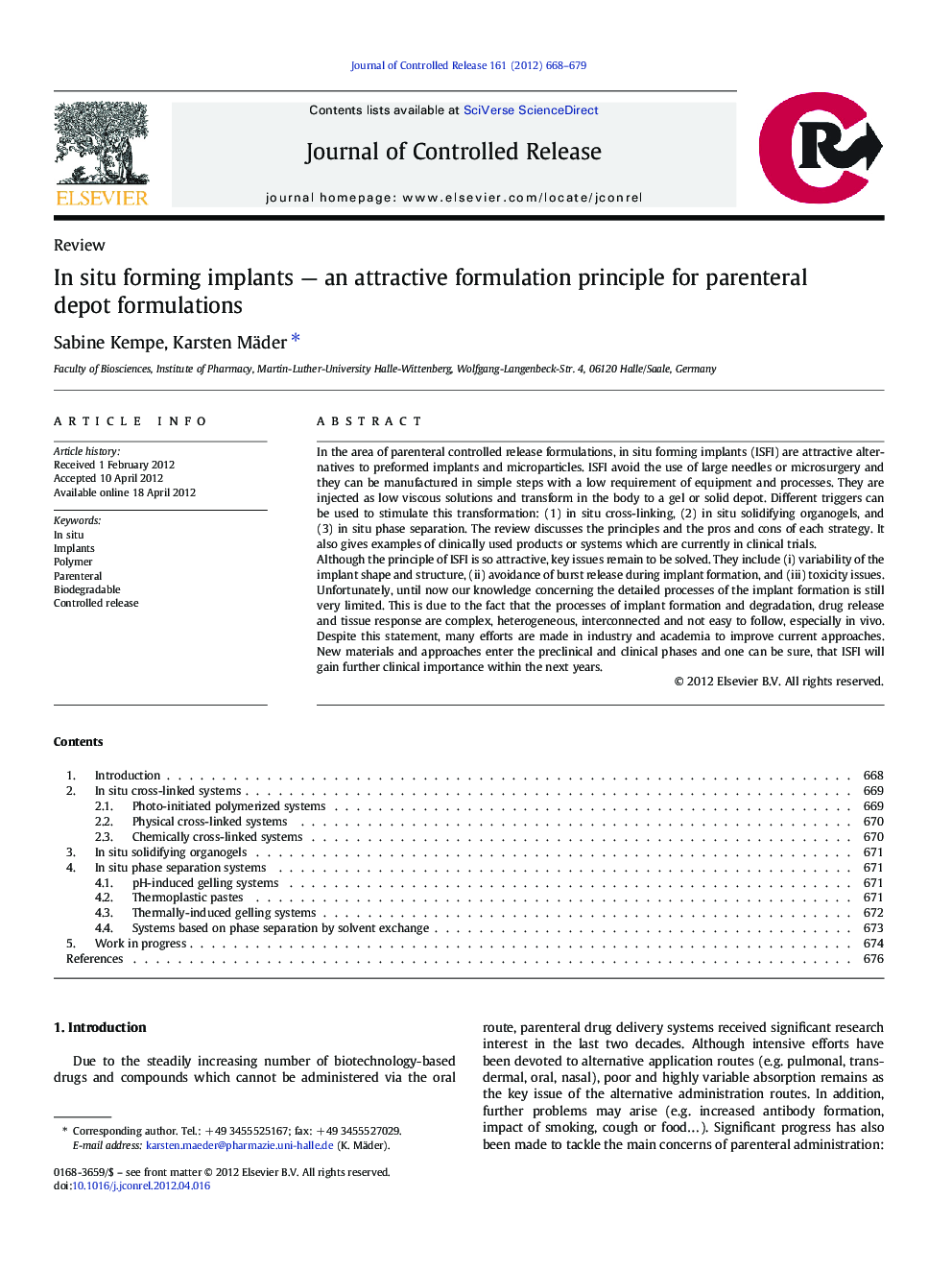| کد مقاله | کد نشریه | سال انتشار | مقاله انگلیسی | نسخه تمام متن |
|---|---|---|---|---|
| 1424441 | 986722 | 2012 | 12 صفحه PDF | دانلود رایگان |

In the area of parenteral controlled release formulations, in situ forming implants (ISFI) are attractive alternatives to preformed implants and microparticles. ISFI avoid the use of large needles or microsurgery and they can be manufactured in simple steps with a low requirement of equipment and processes. They are injected as low viscous solutions and transform in the body to a gel or solid depot. Different triggers can be used to stimulate this transformation: (1) in situ cross-linking, (2) in situ solidifying organogels, and (3) in situ phase separation. The review discusses the principles and the pros and cons of each strategy. It also gives examples of clinically used products or systems which are currently in clinical trials.Although the principle of ISFI is so attractive, key issues remain to be solved. They include (i) variability of the implant shape and structure, (ii) avoidance of burst release during implant formation, and (iii) toxicity issues.Unfortunately, until now our knowledge concerning the detailed processes of the implant formation is still very limited. This is due to the fact that the processes of implant formation and degradation, drug release and tissue response are complex, heterogeneous, interconnected and not easy to follow, especially in vivo. Despite this statement, many efforts are made in industry and academia to improve current approaches. New materials and approaches enter the preclinical and clinical phases and one can be sure, that ISFI will gain further clinical importance within the next years.
Figure optionsDownload high-quality image (71 K)Download as PowerPoint slide
Journal: Journal of Controlled Release - Volume 161, Issue 2, 20 July 2012, Pages 668–679